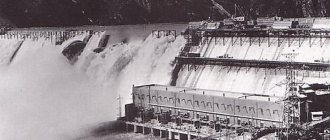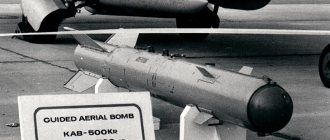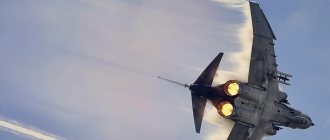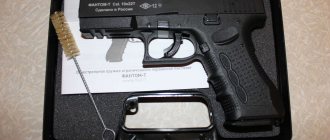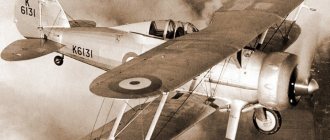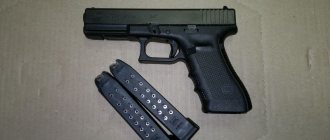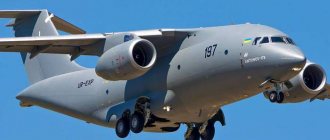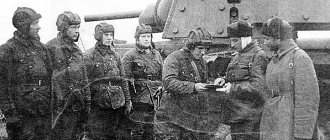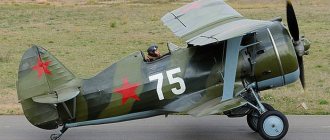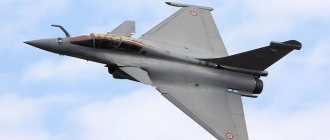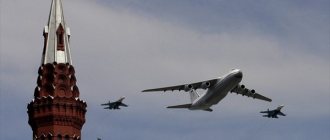After the signing of the peace agreement between Vietnam and the United States, the hostile actions of the parties did not stop, although they were carried out on a much smaller scale. American aircraft mainly carried out reconnaissance flights, but sometimes carried out strikes on individual targets. The Vietnamese fought these flights and also prevented targeted raids. In addition, MiGs appeared in the skies of neighboring Laos, where they also tried to fight enemy aircraft, conducted reconnaissance, and also provided support to their ground units and the Pathet Lao troops, their allies.
There are known cases of the loss of several MiG-21s. The Vietnamese achieved success with the MiG-21. For example, on January 28, 1970, Vu Ngoc Dinh, having carried out an ineffective battle with “Phantoms” in the clouds, upon returning to base, discovered an NN-53 search and rescue helicopter flying at low altitude and shot it down. The Americans also recorded the loss of another Phantom and an army UH-1 Iroquois helicopter during the period of relative calm in the North.
An interesting battle was noted in May 1971 over Laos
A pair of MiG-21s met the US Air Force's counterinsurgency "frame" - a two-boom OU-10A "Bronco". During the battle, three missiles were fired at him, but the American pilot, skillfully maneuvering, evaded them and returned to base. According to Vietnamese data, by the end of 1970, their MiG-21 pilots shot down 99 enemy aircraft, losing 32 fighters. The new general offensive of the North Vietnamese in the South, which began in February 1972, forced the Americans to resume the air war over the Democratic Republic of Vietnam in April of that year.
Until the end of January 1973, the country's territory was subjected to massive US air raids as part of Operations Linebacker 1 and Linebacker 2. The Americans did not waste time in vain over the past four years. New modifications of the Phantoms appeared in the Air Force and Navy aviation - F-4E and F-4J, respectively - equipped with a built-in 20-mm six-barreled M 61 Vulcan cannon, as well as high-thrust engines and new wing mechanization, which increased maneuverability fighters.
In addition, pilots in the Air Force and Naval Aviation received advanced tactical training under the Red Flag and Top Gun programs, respectively. Their essence was to conduct training battles, where the simulated enemy was represented by pilots on T-38 Talon training aircraft, F-5E Tiger fighters, or A-4 Skyhawk carrier-based attack aircraft, using the tactics of the DRV Air Force. The characteristics of the first two vehicles were close to the MiG-21, and the last - to the MiG-17.
The Vietnamese also trained, but their air force was numerically inferior to the Americans, and they also had a significantly smaller number of properly trained pilots with sufficient experience.
Gunships on the warpath
It was becoming unprofitable to chase expensive and high-speed “phantoms” after trucks costing several hundred dollars. Then “gunships”—fire support aircraft—went into battle. Weapons were placed on board the C-47 transport aircraft and the huge C-130 Hercules.
Gunship work. The trajectories of only tracer bullets are visible - every fifth of the total (photo source)
The result was the AC-130 Specter - with 7.62 mm Minigun machine guns, 20 mm Vulcan cannons and even 40 mm Bofors. But the highlight of this gunship was its clever guidance system - with infrared detectors and a computerized sight. By the way, on early AS-47 gunships and reconnaissance helicopters, the sight on the cockpit glass, without further ado, was drawn with a felt-tip pen.
The Specter could hang over the Trail for hours. If he found a convoy, then if he was lucky, he would knock out the lead truck with the first bursts, then the tail one. And then he burned a column locked on the road. According to the crews' stories, they caught such a lot of fish - they burned up to a hundred, or even more, trucks per night.
Spectrum at Ubon Air Base, 1972 (photo source)
But even the rich US could afford less than a dozen of these expensive toys at a time. And the partisans began to install 37-mm anti-aircraft guns everywhere. It fell to the “phantoms” to press the air defense again.
The Vietnamese were ready to fight back
Soon the first air battles began, which were not always successful for them. Thus, on April 16, Phantoms of 432 TRW shot down three MiG-21s. True, these victories were not so easy. For example, one of these fighters was shot down by a crew from 13 TFS consisting of pilot Major D. Cherry and operator Captain J. Feinstein. Before hitting the target, the Americans launched one Sidewinder missile, but the missile failed immediately after launch. Then attempts to launch two more missiles failed. After this, four Sparrow missiles were launched by Cherry’s wingman, but the MiG dodged them. Then Feinstein managed to ensure reliable radar contact with the target, and Cherry, having fired the last missile, still hit it.
Operation Linebacker 1 itself began on May 9, and the next day a series of air battles took place involving a large number of Vietnamese fighters on the one hand, and Phantoms of the Air Force and Navy on the other. During the day, the Americans shot down eleven MiGs: “seventeenth”, “nineteenth” and “twenty-first”, with about three of the latter. The naval pilots had nine victories, and the Air Force representatives had two downed MiG-21s, both of which were attributed to Major Lodge, already known to us. However, Lodge's plane was shot down that same day and he was killed. The Vietnamese pilot Captain Le Tan Dao distinguished himself on the MiG-19. The Americans lost three Phantoms in these battles. One of them was presumably shot down by an S-75 air defense system, but the R-13 missile launcher fired from a MiG-21 cannot be ruled out.
The American crew escaped by successfully ejecting. Lieutenants R. Cunningham and his operator W. Driscoll flew on this Phantom. The day before, they shot down a MiG-17, which was fought by what is believed to be the most mysterious personality of the air war in Vietnam - a certain Colonel Tom, considered the best Vietnamese ace with thirteen victories.
A series of battles took place again in June. On the 5th, Nguyen Tien Sam carried out a successful battle, shooting down two F-4s with 469 TFS, 388 TFW by launching two P-13s. Both American crews escaped and were captured. Shoat also distinguished himself again. On June 24, he and his wingman, Lieutenant Duy, flew out to intercept a group of about twenty Phantoms heading to bomb the Tay Nguyen iron and steel plant. Despite the detection of MiGs by the crew of the EC-121 patrolling over the Gulf of Tonkin, the F-4 pilots ignored the danger, for which they paid. The Vietnamese attacked from below, firing a rocket. Two Phantoms were shot down.
On June 27, Vietnamese pilots again had a successful battle, shooting down four Phantoms. One of them was again credited to Shoat.
In July, the DRV pilots had both good and bad days. So, on July 18, the Phantom crew, consisting of pilot Lieutenant Colonel K. Bailey and operator J. Feinstein, 13 TFS, covering a raid on the city of Dukien, was aimed at a single MiG-21. The operator reliably captured the target, and Bailey fired four AIM-7 missiles at it, which, however, the MiG pilot managed to escape. Only the fifth hit a Vietnamese fighter.
On October 23, there was a break in the raids. Operation Landbaker 1 has ended. Once again, diplomats in Paris came to the fore.
By this time, the Americans, through systematic strikes, had managed to disable a number of Vietnamese airfields and aircraft on the ground, and also significantly disrupt the DRV's radar network. As a result, the Vietnamese, out of the 187 fighters remaining with them, had 71 aircraft listed as combat-ready, but in fact there were 47:31 MiG-21s and 16 MiG-17s. Of the 194 Vietnamese pilots, only thirteen were the most trained: they could operate both day and night.
MiG-21 versus Phantom
The war in the skies of North Vietnam was the largest and most dramatic air conflict since 1945. Dozens of types of aircraft took part in it on both sides. However, as in the Korean War of 1951-1953, the main burden of the confrontation in the air “fell on the wings” of the two main types of combat vehicles, the outcome of the battles between which mainly determined the course of the struggle.
On the American side, the main fighter was the McDonnell-Douglas F-4 Phantom II. This heavy two-seat twin-engine vehicle (normal take-off weight more than 20 tons), created in 1958, was originally intended to provide air defense to American aircraft carrier formations. By the early 1960s, the Phantom II, which had won a number of world speed records, was perhaps the most popular American combat aircraft. The undoubted advantages of the F-4 included outstanding flight characteristics for its time (maximum speed 2260 km/h, service ceiling 16600-17900 m, practical flight range without external tanks 2380 km), a powerful on-board surveillance radar (radar), and also a unique weapon system, including short-range air-to-air missiles AIM-9 Sidewinder (normal ammunition load - four units) and all-angle all-weather AIM-7 Sparrow medium-range missiles (four missiles were placed on external units semi-recessed in the fuselage pendants).
American naval aviation entered the war with F-4B carrier-based fighters, and later improved F-4J carrier-based aircraft joined the fight. The US Air Force had F-4C fighters at the beginning of the war. During the war, they were supplemented by improved F-4D aircraft, and at the final stage of the fighting, the Air Force received the most advanced modification of the Phantom - the F-4E.
The Phantom's main rival, the MiG-21 front-line fighter, was also created in 1958. Unlike the American aircraft, the Russian aircraft, intended for operations above the front line, at a short distance from the home airfield, belonged to a different “weight category” (the normal take-off weight of the modifications used in Vietnam was less than 8 tons) and had a significantly shorter range - about 1500 km. However, in terms of other flight characteristics (maximum speed 2175-2300 km/h, service ceiling - 18,000-19,000 m) the MiG was not inferior to its American rival. The armament of the MiG-21 aircraft was also significantly weaker than that of the “American” - two (later - four) medium-range air-to-air missiles R-ZS with infrared homing (Soviet “pirate” copy of the American AIM- 9 “Sidewinder”), as well as one (not available on some modifications) cannon with a caliber of 23 or 30 mm.
As you can see, the MiG-21 and F-4 are very different aircraft, created to solve different problems.
After the “Tonkin Incident” - a combat collision between the American destroyers Maddox and Turner Joy and Vietnamese torpedo boats on August 2, 1964 - the United States decided to start an air war against the Democratic Republic of Vietnam (DRV), which was providing assistance to the rebels of South Vietnam, the government which, in turn, was supported by the United States. On August 5, 1964, the first American bombs fell on the Wiene torpedo boat base. Cover for the strike aircraft was provided by F-4B fighters from the aircraft carrier Constellation (CVA-64). These were the Phantoms' first combat missions. However, during 1964, only a few limited strikes were carried out on North Vietnam: before the start of a full-scale air war, the United States needed to regroup and build up forces in the region. By the beginning of February of the following year, three attack aircraft carriers with 238 aircraft and 33 escort ships were concentrated off the coast of the Democratic Republic of Vietnam. On February 8, the first air wing of the US Marine Corps, which included 15 F-4B fighters, began being transferred from the island of Okinawa to the South Vietnamese air base at Da Nang. At the same time, the deployment of US Air Force squadrons equipped with F-100, F-105 and F-4C aircraft began at South Vietnamese and Taiwanese air bases. On March 2, the United States launched a large-scale air operation called Rolling Thunder, which lasted until October 31, 1968.
At the first stage of hostilities, the Phantoms of the air force were used both to escort fighters and to strike ground targets. Naval F-4Bs were used mainly for escorting carrier-based attack aircraft - Skyraiders and Skyhawks - and protecting the air defense of aircraft carrier formations from possible counterattacks by Vietnamese and Chinese aircraft.
In the initial period of the war, the Air Force and Air Defense Forces of North Vietnam had only 25 subsonic J-5 fighters (Chinese-made MiG-17F), several Soviet MiG-15 bis, and Il-28 bombers. These insignificant forces could not provide serious opposition to the Americans flying in the skies of Vietnam, as at home. But with the help of Soviet and Chinese military specialists, the Vietnamese soon developed tactics for using their fighters, which made it possible to deliver significant blows to the enemy even in conditions of multiple numerical superiority. Small groups of MiGs patrolled at low altitude, out of sight of the enemy's radar (the Americans used long-range radar patrol aircraft - prototypes of modern Avaks, as well as aviation control posts located on ships cruising off the coast of North Vietnam and having powerful radar stations). When enemy planes appeared, the MiGs unexpectedly attacked his battle formations, shooting attack vehicles heavily loaded with bombs from their cannons.
The Phantoms first met with enemy fighters—Vietnamese MiG-17s—on April 2, 1965, but the encounter ended in vain.
The first real battle involving the F-4 took place on April 9. According to the American version, it proceeded as follows. At 8:40 a.m., a US Navy F-4B fighter taking off from the USS Ranger was attacked over the sea by four Vietnamese MiG-17 aircraft. One of them was shot down by a Sparrow missile, but soon another MiG came behind the Phantom and hit it with a burst from a cannon. The crew of the American plane - pilot T. Murphy and operator R. Fagan - were killed. There is another, Chinese, version of this battle. In accordance with it, an American air patrol, consisting of eight F-4Bs, invaded the airspace over the territorial waters, but not of Vietnam, as follows from the American message, but of the People's Republic of China (in the area of Hainan Island, lying in the Gulf of Tonkin). Perhaps the Americans deliberately provoked the Chinese side into decisive action, hoping to teach them a lesson and make them more cautious in their military support of the Democratic Republic of Vietnam. But the lesson was not instructive: at the beginning of the battle, Lieutenant Murphy’s crew actually managed to damage one of the MiGs with a missile (which, however, was not shot down, but returned safely to base and was later put back into service). Another Phantom, firing a Sidewinder missile at another Chinese fighter, mistakenly hit the F-4B piloted by Murphy, sending it to the bottom of the Gulf of Tonkin.
On May 12, twelve F-4Bs invaded the airspace of Yunnan Province (southwestern China) and shot down one J-5, which, according to the Chinese version, was carrying out a “training” flight. In response to the PRC's protest, the Americans announced that the MiG was destroyed over the territory of the Democratic Republic of Vietnam, in the combat zone (however, no one tried to verify this fact).
On June 4, a flight of MiG-17Fs attacked a trio of F-4Bs over the city of Wu-Ban. One “Phantom” evaded the fight and, smoking from its engines running at maximum, went east. Two other American aircraft were drawn into close combat on turns where the more maneuverable MiGs had advantages, and the Vietnamese were not slow to take advantage of this. After a 180-degree turn, the Vietnamese flight leader opened fire at one of the American vehicles from a distance of 1000-1200 m. Soon he closed within 700 m of the enemy and opened fire again. The F-4B, trying to get out of the fire, vigorously maneuvered in altitude and heading. The second American fighter, following its leader, made a desperate attempt to help out the commander, trying from behind, from a distance of 400-500 m, to “get” the MiG (the task is completely impossible, since the minimum permitted launch range of AIM-9B Sidewinder missiles is much greater) . The wingman MiG-17 opened barrage fire from the cannons, and the second American fighter was forced to escape from the fire by performing a descending turn. It was immediately followed by the first F-4B, which received several damages (according to the Vietnamese command, this Phantom failed to reach its airfield and crashed in Laos).
The next air battle involving Phantoms took place on June 17 over the city of Ninh Binh. During it, four MiG-17Fs attacked the enemy from the rear hemisphere from a distance of 100-600 m. They managed to shoot down two F-4Bs, while the Americans did not show much activity and left the battle rather chaotically. The Vietnamese did not suffer any losses, although their battle formation was also disrupted and control of the flight was lost. When returning to the airfield, two Vietnamese pilots were forced to eject due to complete fuel consumption, and one MiG-17 made an emergency landing at Hai Phong airfield.
On the same day, the Phantoms also opened their combat account: an F-48, launched from the deck of the aircraft carrier Midway, shot down a MiG-17 fighter over Haiphong. On July 10, 1965, the first victory was won by an F-4C from the US Air Force, shooting down two MiG-17s.
Subsequently, encounters between MiGs and Phantoms in the skies of North Vietnam became commonplace. So, on September 20, 1965, a group of American aircraft appeared over the Kep railway station (north of Hanoi), which was detected by the Vietnamese P-35 radar. Part of the Phantoms with bomb weapons attacked the station. Their cover was provided by another pair of F-4Bs, patrolling at an altitude of 3000-4000 m. There was a Vietnamese duty unit in the air - four
MiG-17F, which was aimed at the enemy following commands from the ground. The leader of the first Vietnamese pair dived from a height of 6000 m and attacked the F-4B, which was performing a bombing approach at that time, when it visually detected the Americans. From a distance of 500 m, the Vietnamese pilot opened fire, after which the Phantom made a left turn and descended to escape from the fire. The MiG continued to “sit on the enemy’s tail” and fired a second burst from a distance of 400 m. The Phantom began to smoke, but continued to fly. With the third long burst from 200 m, he was finally shot down. The American pilots failed to eject. The second pair of MiGs began a battle at an altitude of 3000 m, when one of the American aircraft was coming out of a dive after an attack, and the second was just entering a dive for a bombing approach. The Vietnamese flight commander attacked the first plane, somewhat prematurely opening fire from a distance of 1200 m. The American pilot, finding a MiG on his tail, turned on the afterburner and left the battle.
In general, it should be noted that until the MiG-21 came on the scene and the massive use of S-75 anti-aircraft missile systems began, American aviation in the skies of Vietnam behaved rather carelessly, not considering the small number of MiG-17s as a serious threat. For example, Phantoms, which served as escorts, were often loaded with bombs. The Vietnamese sought to keep the MiGs at low altitude, where their small camouflaged aircraft were visually less noticeable and almost completely invisible to the American airborne radars. Suddenly attacking fighter-bombers, Vietnamese pilots forced them to get rid of their bomb load and, approaching at a short distance, shot them from cannons. Escorting fighters occupying a higher air corridor often simply did not have time to engage the MiGs. This forced the Americans to change tactics and reduce the cover groups to low altitudes (being at the same level or lower than the Vietnamese fighters, the Phantoms could “see” them using their radars or visually against the sky). Using higher speed, the F-4s approached the enemy and hit them with missiles, after which they quickly exited the battle. If the battle turned into a “carousel” on turns, then the advantage passed to the Vietnamese, who quickly approached the enemy at a distance of less than 1000 m, where the F-4, which had only missile weapons, were practically helpless.
However, the Americans soon improved their tactics again: several Phantoms engaged in close combat, while one of the flights allowed itself to be drawn into a battle on turns, while the other quickly gained altitude and attacked the MiGs with Sparrow missiles from a distance of several kilometers. Having lost six fighters in a similar situation, the Vietnamese switched to the previously proven tactics of sudden one-time “ambush” strikes followed by a quick exit from the battle.
At the end of 1966, on the recommendations of Soviet military experts, DRV aviation advanced the interception line directly to the country’s borders, where American aircraft were flying in dense combat formations, which interfered with the conduct of maneuverable combat. Another innovation was the practice of ambushes on the ground, developed with the participation of the Chinese: MiG-17s took off from jump airfields and attacked the enemy following in close formation, after which they quickly descended and, camouflaged to match the terrain, returned to the airfield.
Since February 1966, the main opponents of the F-4 have been the supersonic MiG-21F-13 (some of them are Czechoslovak-made) and the MiG-21PF-V (an all-weather version, that is, equipped with a MiG-21PF radar sight in a “tropical” version), so the same as American aircraft equipped with missile weapons - R-Zs missile launchers with TGS or units with 55-mm unguided aircraft missiles (UAR) S-5. The command of the US Air Force and Navy continued to place high hopes on the F-4, believing that powerful weapons, advanced on-board radar, high speed and acceleration characteristics, combined with new tactics, would provide the Phantoms with superiority over enemy aircraft. But in collisions with the lighter MiG-21s, the F-4s began to suffer defeat after defeat. From May to December 1966, the United States lost 47 aircraft in air battles, while destroying only 12 enemy fighters. The heavy load on the wing and somewhat lower (especially at medium altitudes) angular speeds of turns of American fighters had an effect (the Americans subsequently admitted that the Phantom was generally inferior to the MiG in turns), limitations on operational overload (6.0 versus 8.0 for the MiG -21PF) and permissible angles of attack, as well as the worst handling of the American car. The F-4 also did not have an advantage in terms of thrust-to-weight ratio: at normal take-off weight it was 0.74 for the F-4B, and 0.79 for the MiG-21PF. The disadvantages of the Phantom include, first of all, its unsatisfactory spin characteristics. There was a possibility of getting into a flat spin, from which it was practically impossible for an average pilot to get out of it. It was reported that until 1971 alone, 79 Phantoms were lost due to being caught in a tailspin. The onboard radar of the American fighter, although it had a long detection and acquisition range, had relatively low noise immunity. The cockpits of the pilot and operator were oversaturated with numerous instruments and switches. At the same time, the advantages of the Phantom that emerged in Vietnam include slightly better acceleration characteristics (the F-4E accelerated from 600 to 1100 km/h in 20 s, and the MiG-21PF in 27 s), more high rate of climb, better visibility from the cockpit and the presence of a second crew member who monitored the air situation and promptly warned the commander about the threat from the rear hemisphere.
The disadvantages of the MiG-21 include the short range of the radar sight (no more than 10-12 km for fighter-type targets), a long time for a full radar review cycle, a poorly perceived target mark on the indicator in the cockpit, and insufficient visibility from the cockpit. To switch weapon options, the pilot had to remove one of his hands from the aircraft control levers. The fighter's engine smoked heavily in certain operating modes, which unmasked the aircraft (in clear weather, the MiG-21 could be detected at a distance of up to 30 km).
The first battle involving the MiG-21 took place in Vietnam on April 23, 1966 and ended inconclusively. And on April 26, the Phantoms managed to shoot down the first MiG-21, opening the scoring in the duel between these fighters, which lasted on the fronts of many local wars for more than two decades.
The appearance of new MiGs forced the American command to increasingly use Phantoms to escort attack aircraft, finally abandoning the need to equip the escort F-4s with bomb weapons.
MiG-21s usually attacked the enemy at supersonic speed, launching missiles from the rear hemisphere and quickly breaking away from possible pursuit. It was difficult for the Americans to oppose anything to such tactics, which required highly trained pilots and guidance officers at the ground command post. Joint actions of the “twenty-first” with MiG-17s also began to be practiced, displacing the enemy from low to medium altitudes, where they were attacked by MiG-21s.
In 1967, the Americans managed to somewhat improve the aerobatic and tactical training of their fighter pilots. New F-4D aircraft, modernized taking into account military experience, began to arrive in combat squadrons of the Air Force. On June 5, the F-4D fighter opened the combat account of aircraft of this modification, shooting down a MiG-17 over Hanoi. The qualitative strengthening of American fighter aviation led to the fact that during the first half of 1967, during air battles, DRV aviation managed to shoot down only 15 US aircraft. However, in the future, Vietnamese fighters again increased their effectiveness (the acquired combat experience, as well as the transition to new and modernized types of machines - MiG-21PF and MiG-17F with R-Zs guided missiles had an impact). In the first half of 1968, in 40 battles, the Vietnamese managed to destroy 25 enemy aircraft. In total, during the first stage of the air war, from April 1965 to November 1968, 268 air battles were conducted over Vietnam, during which 244 American and 85 Vietnamese aircraft were shot down. Including in 4b battles, losses amounted to 27 F-4s and 20 MiG-21s.
In May 1968, Vietnamese-American negotiations began in Paris, which resulted in a cessation of bombing of the Democratic Republic of Vietnam on November 1, 1968. There was relative calm in the skies of Vietnam, and military operations moved to the jungles of the south. From December 1968 to April 1972, only five air battles took place over the border areas of the Democratic Republic of Vietnam and South Vietnam, including four battles in 1971 (one F-4 and MiG-17 fighter was shot down, as well as an American OV advanced aircraft -10A "Bronco"). The resulting pause was used by both sides to qualitatively strengthen the fighter groups. Since 1968, the US Air Force in Vietnam began to receive F-4E fighters with improved maneuverability, built-in cannon weapons and a new radar. In 1970, the 366th and 588th Air Force fighter wings located at Da Nang Air Base were almost completely re-equipped with new aircraft. US Navy aircraft carriers participating in combat operations received improved F-4J carrier-based fighters. The Soviet side transferred to the Vietnamese Air Force MiG-21PFM fighters with a GP-9 suspended cannon container, and a little later - MiG-2ShF and MiG-21MFL aircraft with a built-in GSh-23 cannon. In addition, China provided Vietnam with 44 J-6 fighters (a licensed version of the MiG-19 aircraft) in 1968-1969.
Convinced of the impossibility of achieving superiority over enemy fighters in a short time, the Americans concentrated their main efforts on improving the combat skills of their pilots. The US Air Force organized special retraining courses under the Red Flag program, during which they practiced air combat with Aggressor squadrons equipped with Northrop F-5 fighters simulating MiG-21 aircraft. For naval aviation pilots, on the initiative of Captain Frank Ault, in 1969, the “Navy Fighter Weapons School” was also organized, known as the “Top Gun” school (familiar to us from the film of the same name starring Tom Cruise), where training took place for five weeks. intensive training of pilots in conditions as close as possible to combat ones.
In June 1971, the United States resumed raids on North Vietnam.
In March-April 1972, a massive and very successful offensive of the armed forces of the DRV began in the south. In an effort to prevent the complete military defeat of the Saigon government and influence the course of negotiations in Paris, the Americans intensified their bombing of the north. In the spring of 1972, the United States, having increased its air force to 1,000 combat aircraft, conducted a large-scale air operation “Freedom Train” (April 9-May 7), during which a total of about 40 well-planned powerful bomb attacks were launched on North Vietnamese communications and airfields. which led to a significant reduction in clashes between Phantoms and MiGs.
On April 16, two MiG-21MFs engaged 12 Phantoms, and both Vietnamese aircraft were shot down.
On April 27, an F-4 flight met with a pair of MiG-21s and lost one aircraft in the ensuing battle.
On May 6, a pair of Phantoms intercepted two MiG-21 fighters trying to attack A-7 attack aircraft; one MiG was shot down.
On the same day, an F-4 flight engaged four MiG-21s, with six missiles fired at one of the MiGs, but the experienced pilot managed to dodge them. The subsequent salvo of three more American missiles still hit the MiG-21, but the pilot ejected safely.
On May 8, the Americans began the air operation Linebacker, which lasted until October 23. The culmination of the air struggle in the spring of 1972 was May 10, when DRV aviation carried out 64 sorties, conducting 15 air battles, in which seven Phantoms were shot down. Those, in turn, managed to destroy two MiG-21s, two MiG-17s and one J-6.
During one of the battles on May 10, a MiG-17 flight was alerted to release the blockade of a neighboring airfield. The MiGs secretly, at an extremely low altitude, approached the target and shot down one Phantom in the first attack. The second pair of flights got involved in a maneuverable air battle with four F-4s, which ended with the loss of one MiG-17. However, the involvement of Phantoms in the air “carousel” allowed the Vietnamese to lift two MiG-21s into the air from a blocked airfield, which from a hill at an altitude of 2 km attacked the same number of F-4s and shot down both Phantoms with just two R-Zs missiles .
On May 11, two MiG-21s, playing the role of “bait,” brought out four F-4s on two MiG-21s patrolling at low altitude. The MiGs quickly attacked the Phantoms and shot down two enemy aircraft with three missiles.
On June 13, a MiG-21 flight intercepted a group of Phantoms. Having wedged themselves into the American battle formation, two Vietnamese fighters caused panic among the enemy: the Phantoms broke formation and began to maneuver erratically. At this time, the second pair of MiGs launched a missile attack and shot down two F-4s.
On May 18, Vietnamese aviation carried out 26 sorties and conducted eight air battles, costing the Americans four Phantoms. Vietnamese fighters suffered no losses that day. During one of the battles, two MiG-21s intercepted a flight of Phantoms. The leader of the Vietnamese pair, Captain Iga, attacked from a half-turn and shot down the F-4 with one missile.
In the summer of 1972, the intensity of air battles began to decline, and collisions in the air became sporadic. So, on June 12, a flight of Phantoms fought with two MiG-21s and lost one aircraft. The next day, two more air battles took place, costing the Americans two more F-4s (the Vietnamese side did not suffer any losses).
As a result of the “air offensive” undertaken by the Americans in the spring and summer of 1972, by the fall in the theater of operations, 360 US Air Force tactical fighters and 96 Navy fighters, most of which were Phantoms of the latest modifications, were opposed by only 187 DRV fighters (MiG-17 , MiG-21 J-6). It should be noted that of this number, only 71 aircraft (including 31 MiG-21) were combat-ready.
In September 1972, the only air battle took place in which a Soviet pilot acted from the Vietnamese side against the Phantoms. On a two-seat MiG-21US training aircraft, which had no weapons, a Vietnamese fighter pilot and a Soviet instructor practiced piloting techniques. At a distance of 8 km from their airfield, they received a warning that a flight of Phantoms was approaching at low altitude. By this time, only 800 liters of fuel remained in the MiG tanks. Trying to get out of the way of the attack, the fighter pilot performed a sliding roll, which thwarted the attack of the first American pair. Then the MiG-21US was attacked twice by aircraft of the second pair of enemy aircraft, but during a forced turn it again escaped the attack and the missiles passed by. The third attack by the Americans also turned out to be ineffective, but the vigorous maneuvering of the MiG near the ground with the afterburner on consumed the last remaining fuel, and the crew made the only right decision - to eject. While climbing, the plane's engine suddenly stopped, and at that moment the MiG was hit by a missile fired from the F-4. Fortunately, the crew managed to land safely using parachutes.
In December, the Americans launched the latest large-scale operation, Linebacker 2, aimed at negotiating certain conditions at the Paris negotiations. During the operation, it was planned to further destroy the infrastructure of North Vietnam and disable its military installations with the help of massive air strikes involving a large number of Boeing B-52 strategic bombers.
However, the preparation of such a powerful strike as Linebacker-2 could not be carried out unnoticed, and this gave the Vietnamese side the opportunity to develop a number of countermeasures. A surprise for the Americans was the use of the MiG-21 from camouflaged jump platforms, where the aircraft were delivered on the external sling of heavy Mi-6 helicopters and launched using powder accelerators.
During the 12 days of Operation Linebacker 2 (December 18-29), seven American aircraft (including four Phantoms) and three Vietnamese MiG-21s were shot down during eight air battles. At the same time, the “twenty-first” tried not to get involved in battles on turns, and after performing a supersonic interception (regardless of the result) they quickly left the battlefield. However, forced in a number of cases to still be drawn into the “dog dump”, the MiG-21 fighters maintained an advantage over the modernized F-4E and F-4J at medium altitudes, losing it only at the ground.
On December 22, 1972, two MiG-21s were scrambled to intercept the Americans, one of which was shot down by a Phantom. On December 23, four MiG-21s took off, shooting down one F-4. On December 27, Vietnamese fighter aircraft again entered into battle with American aircraft, destroying two Phantoms. On December 28, two duty MiG-21s took off from Noi Bai airfield to intercept a group of American aircraft detected by radar posts. When they approached the enemy at low altitude (300 m) and received guidance commands from the ground, two minutes after takeoff the Vietnamese turned on the afterburners and put their vehicles into climb mode. During the subsequent turn and change of lanes, the wingman visually detected a flight of Phantoms at a distance of about eight kilometers and asked the leader for permission to attack. The Americans noticed the enemy’s appearance late and did not have time to begin the defensive maneuver; as a result, one F-4 was shot down by a missile. After completing the attack, the wingman began to align himself with the leader, at that moment the commander of the Vietnamese pair noticed two more Phantoms. With an energetic maneuver, he disrupted the American battle formation and “cut off” his wingman, whom he lost sight of at that time, from enemy aircraft. Two separate maneuver battles ensued. The leading MiG managed to break away from the F-4, sharply going to the ground, and the wingman, spinning on turns, knocked out another Phantom, but when trying to leave the battle, his plane was damaged by fragments of an American missile that exploded a few meters from the fuselage. The Vietnamese pilot ejected safely.
During the raids of B-52 heavy bombers on Hanoi, F-4s several times played the role of decoys: the F-4 flight, which had good group coordination, walked in tight formation. Judging by Vietnamese radar readings, the flight was one large bomber-class target. While interceptors were targeting the imaginary B-52. the target disappeared into the air, splitting into four aircraft, which themselves counterattacked the Vietnamese fighters.
In total, in 1972, 201 air battles took place between American and Vietnamese aircraft, resulting in the loss of 54 Vietnamese fighters (including 36 MiG-21s and one MiG-21US) and 90 American aircraft (including 74 F-4 fighters and two RF-4C reconnaissance aircraft. Thus, the MiG-21s destroyed 6 enemy aircraft).
The last victory during the Vietnam War (according to American data, the 197th in a row) was won by the Phantom on January 12, 1973. An F-4J (commanded by Lieutenant Victor Kovaleski), taking off from the deck of the aircraft carrier Midway, shot down a MiG-17 fighter with a Sidewinder missile. Ironically, Victor Kovaleski's F-4J was also the last Phantom to be shot down over Vietnam two days later (the pilot and cameraman escaped).
On January 27, 1973, the United States announced the withdrawal of troops from Vietnam, effectively admitting defeat in this war.
The war gave birth to its heroes. The most successful Phantom crew in Vietnam were pilot S. Ritchie and operator C. Bellevue, who shot down five MiGs each (in addition, C. Bellevue shot down another plane with another pilot). A kind of record holder among the Vietnamese was the pilot Ha Van Tuyk, who entered into battle with 36 enemy aircraft in his MiG-21 and shot down the plane of the commander of the American fighter wing, Colonel D. Folin.
It should be admitted that the rivalry between MiGs and Phantoms in the Vietnamese skies ended in general with the defeat of the American machine: F-4 fighters managed to shoot down 54 MiG-21 aircraft during the entire period of hostilities from 1966 to 1972, during the same period “twenty-first” destroyed 103 Phantoms. In addition, the loss of one American aircraft usually resulted in the death or capture of two crew members. In addition, the Phantom cost American taxpayers several times the cost of one MiG-21.
In general, the F-4 aircraft had to solve tasks that were not typical for them in Vietnam: created as a heavy interceptor designed to defend strike aircraft carrier formations from attacks by high-speed bombers and anti-ship cruise missiles, the Phantom was used in the fight for gaining air supremacy, opposing a more suitable this role for the MiG-21 aircraft. Therefore, the defeat of the Americans is explained not by the mistakes of the designers, who managed to create an outstanding combat aircraft for its time, but by the lack of a specialized light air combat fighter in the United States, capable of equal resistance to the MiG-21. Despite the fact that the US Air Force had the Convair F-102 and F-106, Lockheed F-104 and Northrop F-5 fighters, these machines were significantly inferior in a number of parameters to both the MiG-21 and F -4 and were not used in air battles over the territory of the Democratic Republic of Vietnam. The lightweight carrier-based supersonic fighter Vought F-8 Crusader, which initially had high hopes (by the beginning of the war, the ratio of these aircraft and F-4Bs on the decks of American aircraft carriers deployed in the Gulf of Tonkin was approximately equal), also did not live up to expectations , inferior to the MiG-21 in terms of basic flight characteristics.
However, in the role of a tactical strike aircraft, the F-4 performed admirably. "Phantoms" were widely used for attacks on particularly important targets (bridges, power plants) and on enemy railway transport. To solve these problems, aircraft, as a rule, were armed with free-fall bombs and 70 and 127 mm caliber NARs. Since April 1965, “free hunting” of pairs or units of “Phantoms” has been practiced over the railways and highways of Vietnam. The planes continuously combed enemy communications, in some places completely paralyzing movement during daylight hours.
The experience of the Vietnam War had a huge impact on the military aircraft industry in both the USA and the USSR. The Americans responded to the defeat of the Phantom in air battles by creating highly maneuverable fourth-generation fighters - the F-15 Eagle, F-16 Freedom Fighter, designed to surpass the MiG-21 in close maneuver combat (the influence of the MiG on the American military was so great that that when shaping the appearance of the F-15 heavy fighter at a fairly high level, it was proposed to completely abandon the Sparrow medium-range missiles and airborne radar, concentrating efforts on improving maneuverability characteristics). At the same time, the “universal soldier” F-4 also influenced the minds of Russian aviation theorists, which was reflected in modifications of third-generation fighters.
However, after the end of the Vietnam War, the confrontation between MiGs and Phantoms in the sky did not stop. MiG-21 and F-4 met in air battles over the Suez Canal, in the skies of Sinai, over the Nile Delta and Syria in 1973, in Lebanon in the late 1970s - early 1980s, during the Iran-Iraq war of 1980- 1988
It was expected that the enemy would soon resume raids
To repel them, it was decided to continue to use their fighters in small groups, from two to four, or even as single aircraft. Both interception and ambush of MiGs in the air were planned. The task was made easier by the rather standard American tactics.
The disruption of the radar network led to the deployment by the Vietnamese of a large number of air surveillance posts in the directions of the alleged raids. In addition, the presence of a large number of radar radiation sensors on American aircraft forced Vietnamese pilots to abandon searching for the enemy using radar sights, and to use a conventional sight for this purpose. The target was attacked after it was captured by the homing heads. However, this method was effective only during the day in simple weather conditions. In bad weather or at night, searching with a visor was difficult. True, at night the Americans themselves sometimes “helped”: being completely confident that there were no Vietnamese fighters in the air, they often did not turn off their side lights, fearing a collision when flying in a group.
On December 13, negotiations in Paris were interrupted; on December 18, raids were resumed, which were carried out as part of Operation Landbaker 2. The strikes were carried out on a number of industrial and military facilities, including many airfields. Only a few “taxiing stations” survived. A way out was found by Mi-6 helicopters. MiG-21s on an external sling were transferred to these very “taxiing stations”, from where they were launched using powder accelerators. Landing took place at surviving airfields or sections of highways.
From November 1967 to May 1968, this vehicle scored 14 victories in air battles.
